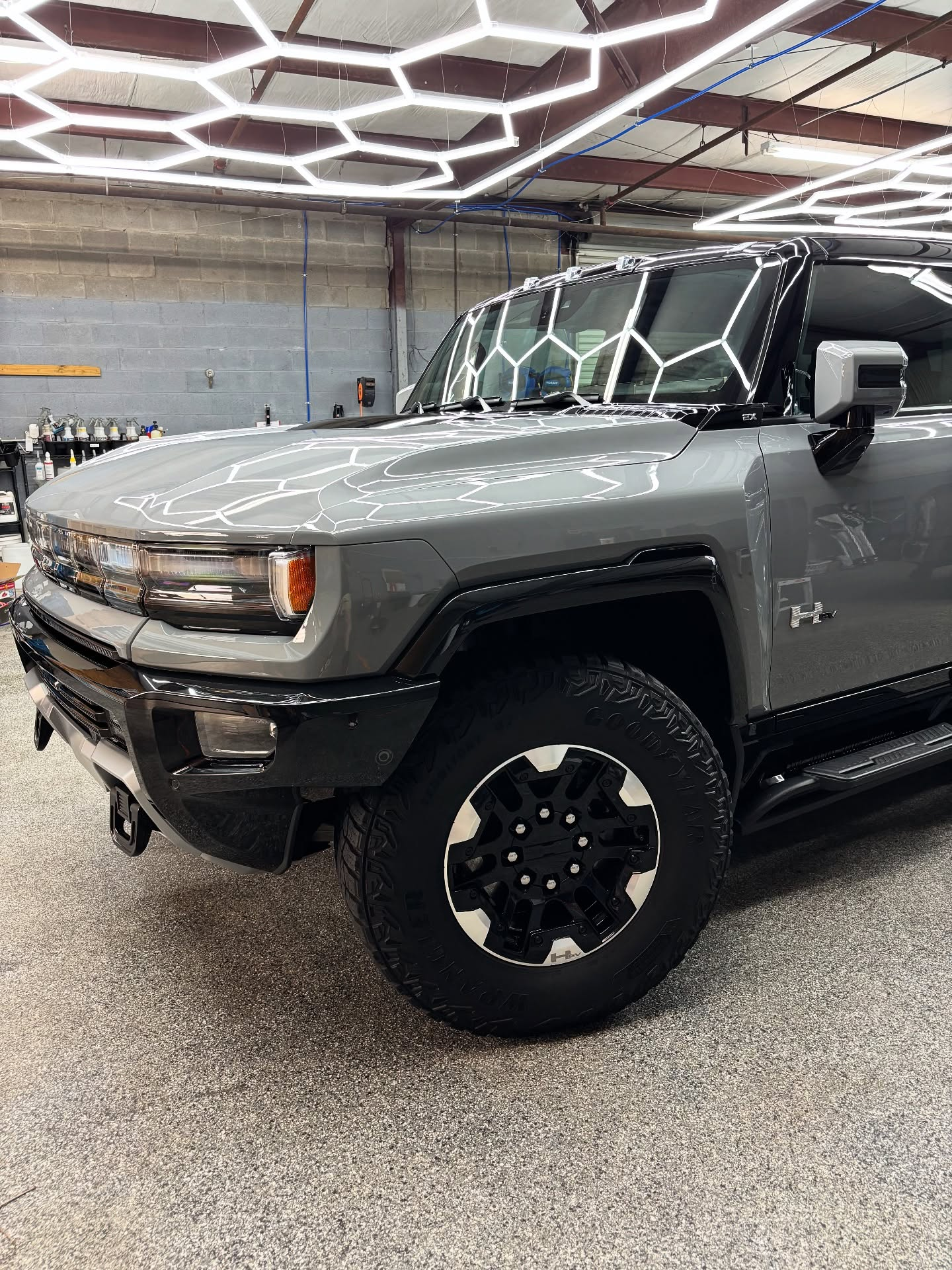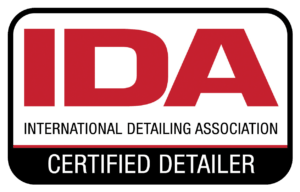Front-End vs. Full-Car PPF: Which Is Right for Your Luxury Ride?
You've spent good money on your dream car. Maybe it's that sleek BMW you've been eyeing for months, or perhaps you finally pulled the trigger on that Corvette sitting in your garage. Either way, you want to keep it looking pristine. That's where PPF front-end protection comes into play—but should you go all-out with full-car coverage, or is front-end protection enough?
This decision isn't just about money (though that matters too). It's about understanding your driving style, where you live, and what kind of protection makes sense for your specific situation. Some folks in Columbus drive their luxury rides daily through construction zones and highway debris. Others keep their babies mostly garaged, only bringing them out for weekend cruises.
Let's break down the real differences between front-end and full-car PPF so you can make the right call for your investment. Because at the end of the day, there's no one-size-fits-all answer—but there's definitely a right choice for your particular situation.
What Exactly Is PPF Front End Protection?
PPF front-end coverage focuses on the areas of your car that take the biggest beating from road debris and daily driving hazards. We're talking about your hood, front bumper, headlights, and side mirrors—basically everything that faces forward when you're cruising down Macon Road or hitting I-185.
Think about it this way: when you're driving, what parts of your car get hit first by rocks, bugs, and road grime? That's exactly what front-end PPF protects. The film acts like an invisible shield, absorbing impacts that would otherwise chip your paint or crack your headlights.
Most front-end packages also include:
- Full hood coverage
- Front bumper protection
- Headlight and fog light shields
- Side mirror caps
- A-pillar strips (sometimes)
Full-Car PPF: The Complete Protection Package
Full-car PPF takes protection to another level entirely. This means wrapping your entire vehicle—doors, roof, trunk, rear bumper, the works. It's like putting your car in a protective bubble that covers every painted surface.
Full coverage protects against more than just front-facing road debris. Door dings in parking lots, shopping cart scratches, tree sap, bird droppings that sit too long—all of these become non-issues with full-car protection.
The coverage typically includes:
- Everything from front-end packages
- All doors and panels
- Roof protection
- Rear bumper and trunk
- Rocker panels and lower trim
- Any painted surfaces you want protected

Investment Considerations: What You're Really Looking At
Here's where things get interesting. PPF front-end packages and full-car installations each offer different value propositions depending on your specific needs and vehicle usage.
Front-end PPF involves less material and labor since you're covering maybe 30-40% of your car's painted surfaces. The installation process is also more straightforward, focusing on the highest-impact areas of your vehicle.
Full-car PPF requires more comprehensive planning and installation time, but many people find the complete protection approach fits their long-term vehicle care strategy. Many shops structure their services to make different coverage levels accessible to various budgets.
The real consideration isn't just the initial installation – it's the long-term value and peace of mind. Front-end protection handles the most common types of damage, while full coverage protects your entire investment from unexpected issues.
Protection Benefits: Where Each Option Shines
PPF front-end protection handles about 80% of the damage your car will see during normal driving. Rock chips, bug splatter, road salt, and minor abrasions all get stopped at the front lines. For many drivers in the Columbus area, this level of protection covers their biggest concerns.
The front of your car sees the most action. Highway driving, construction zones, and daily commuting all throw debris at your hood and bumper. Front-end PPF stops this damage before it starts, keeping your paint looking showroom fresh where it matters most.
Full-car PPF takes protection further by handling the unexpected stuff. Parking lot mishaps, vandalism, weather damage, and wear from regular washing all become manageable with complete coverage. You get peace of mind knowing every inch of your paint is protected.
Making the Right Choice for Your Driving Style
Your driving habits should play a huge role in this decision. Do you rack up highway miles commuting to Atlanta? Front-end protection might be your sweet spot since most of your damage risk comes from road debris.
If you're the type who babies their car but still wants to drive it regularly, full coverage makes sense. You're not worried about daily wear as much as you want complete protection from life's little surprises.
Consider these questions:
- How many miles do you put on annually?
- Do you drive mostly city streets or highways?
- Where do you park (garage, street, office parking lot)?
- Is this a weekend car or a daily driver?
- What's your budget for long-term car care?
Road Conditions in Columbus and Phenix City
Living in our area comes with specific challenges. Construction on I-185 seems never-ending, and let's not even talk about the condition of some of our local roads after a hard winter. These factors make front-end protection almost essential for any car you care about.
The red clay and seasonal pollen here also create unique challenges. While these don't necessarily damage paint, they can make maintenance tougher without proper protection. PPF makes cleaning easier and prevents staining from environmental contaminants.
Summer heat and humidity can also be hard on unprotected paint. Quality PPF helps maintain your car's finish against these elements, whether you choose front-end or full coverage.
Professional Installation Makes All the Difference
Whether you choose PPF front end or full-car coverage, installation quality matters more than the film itself. Poor installation leads to edges lifting, bubbles forming, and protection that doesn't last as long as it should.
At Upscale Detail Co LLC, we've seen too many DIY disasters and cut-rate installations that end up costing more to fix than doing it right the first time. Professional installation includes proper surface prep, precise cutting, and techniques that ensure your PPF looks invisible and lasts for years.
The installation process also affects warranty coverage. Most film manufacturers only honor warranties when their products are installed by certified professionals using approved techniques.
Maintenance: What to Expect After Installation
Both front-end and full-car PPF require some maintenance, but it's pretty minimal. Regular washing with proper techniques keeps the film looking clear and functioning properly. Most PPF has self-healing properties that work with heat, so minor scratches disappear on their own.
Full-car coverage requires slightly more attention simply because there's more surface area, but the maintenance routine stays the same. The key is using PPF-safe products and techniques that won't damage the film or reduce its effectiveness.
Many people find that PPF actually makes their car easier to maintain. The smooth surface repels dirt and contaminants better than bare paint, and cleaning becomes quicker and more effective.
When Front-End PPF Makes Perfect Sense
PPF front-end protection is ideal when you want maximum bang for your buck. If most of your driving is local, you park in safe areas, and you're primarily concerned about road debris, front-end coverage handles your biggest risks efficiently.
This option also works great for people who want to test out PPF before committing to full coverage. You get to experience the benefits and see how the film performs on your specific vehicle and driving conditions.
Budget-conscious car enthusiasts often find PPF front-end protection hits the sweet spot between comprehensive protection and practical investment. You're covering the areas most likely to get damaged without the commitment of full coverage.

Why Some People Go Full-Car Right Away
Full-car PPF appeals to people who want complete peace of mind. If you've invested serious money in your vehicle and plan to keep it long-term, protecting every inch of paint makes financial sense.
This option also works well for people with unpredictable schedules or driving conditions. You might mostly drive local roads, but that occasional road trip or unexpected detour through a construction zone won't stress you out.
Some car owners choose full coverage because they want their vehicle to always look perfect, not just from the front. Door dings, parking lot scratches, and environmental damage can happen anywhere on your car.
FAQs
How long does PPF front-end protection typically last?
Quality PPF typically lasts 7-10 years with proper care and installation. The front-end areas often see more wear than other parts of the car, but good film holds up well to daily driving conditions. Weather, driving habits, and maintenance all affect longevity, but most people get excellent value from their investment over this timeframe.
Can I add more PPF coverage later if I start with just the front end?
Yes, you can add coverage later, though it's usually more cost-effective to do everything at once. The film will match perfectly if it's the same product line, but you'll pay for additional setup and labor. Many people start with front-end coverage and expand later when budget allows or when they see how much they like the protection.
Will PPF affect my car's paint or finish underneath?
Modern PPF is designed to be completely removable without affecting your original paint. In fact, the paint underneath often looks better after removal because it's been protected from UV rays and environmental damage. Proper installation and removal by professionals ensures no damage to your vehicle's finish.
How do I know if my driving conditions require front-end or full-car PPF?
Consider your daily routes, parking situations, and how much you value your car's appearance. Highway commuters and people who park in busy areas usually benefit most from front-end protection. If you want complete peace of mind and maximum resale value protection, full coverage makes more sense for your investment.
Does PPF work with ceramic coating applications?
Absolutely! PPF and ceramic coating work great together. Many people apply ceramic coating over their PPF for additional protection and easier maintenance. The coating helps keep the film cleaner and can improve its appearance, though quality PPF looks great on its own, too.
Protect Your Luxury Ride—Find the Perfect PPF Option Today
Choosing between PPF front-end and full-car protection comes down to your driving habits, budget, and how much peace of mind you want. Front-end coverage handles the majority of damage risks, while full-car protection offers complete security for your investment.
Either way, professional installation is key to getting the most from your PPF investment. The right choice protects your luxury vehicle and maintains its value for years to come.
Ready to protect your investment? Contact our team to discuss which paint protection film option works best for your luxury vehicle and driving needs.


